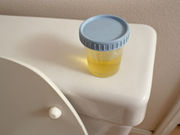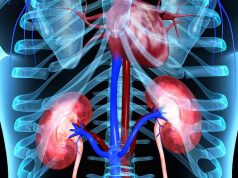Metabolites of di(2-ethylhexyl) phthalate consistently inversely linked to total 25(OH)D
FRIDAY, Sept. 23, 2016 (HealthDay News) — Exposure to phthalates and bisphenol A (BPA) may impact circulating levels of total 25-hydroxyvitamin D (25[OH]D), according to a study published online Sept. 20 in the Journal of Clinical Endocrinology & Metabolism.
Lauren E. Johns, M.P.H.S., from the University of Michigan School of Public Health in Ann Arbor, and colleagues examined the correlation between urinary concentrations of 11 phthalate metabolites and BPA and serum 25(OH)D in a cross-sectional study. Data were obtained from the U.S. National Health and Nutrition Examination Survey 2005 to 2010 for adults (aged ≥20 years).
The researchers observed a consistent inverse association for metabolites of di(2-ethylhexyl) phthalate (DEHP) with total 25(OH)D in the study cohort and in gender-stratified models. There was a significant inverse correlation for the molar sum of DEHP metabolites (ΣDEHP), while an increase in ΣDEHP correlated with a 1.90 percent decrease in total 25(OH)D. There was a positive correlation for monoethyl phthalate. A statistically significant inverse association was found for BPA in women, but not men. An increase in interquartile range in urinary BPA correlated with a 3.71 percent decrease in total 25(OH)D in women.
“Our results provide suggestive evidence that environmental exposure to phthalates and BPA may alter circulating levels of total 25(OH)D in adults,” the authors write. “Future human and animal studies are required to resolve the direction, temporality, and impact of these relationships.”
Copyright © 2016 HealthDay. All rights reserved.








